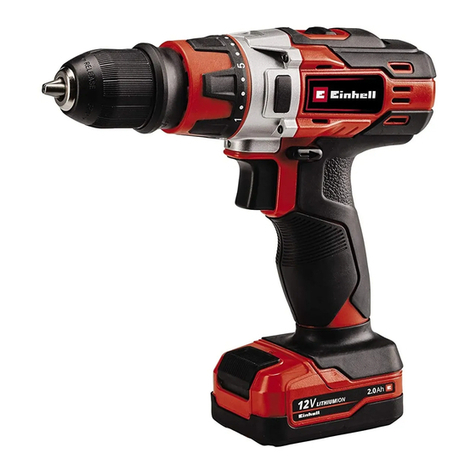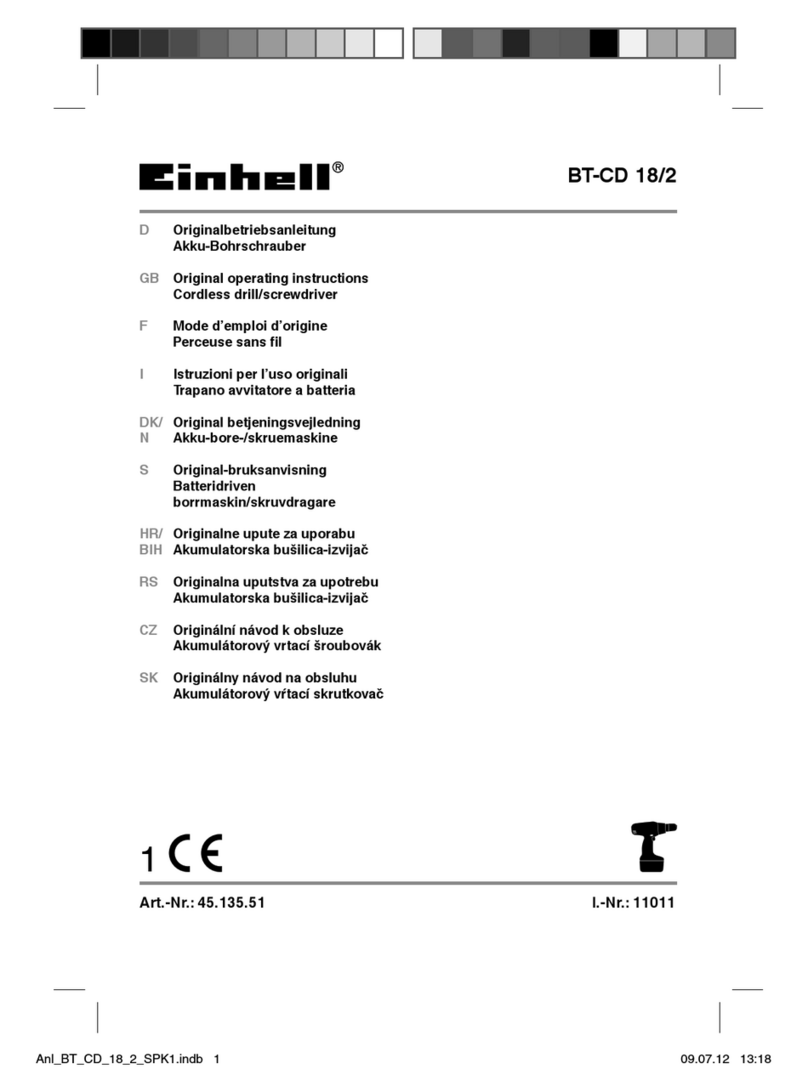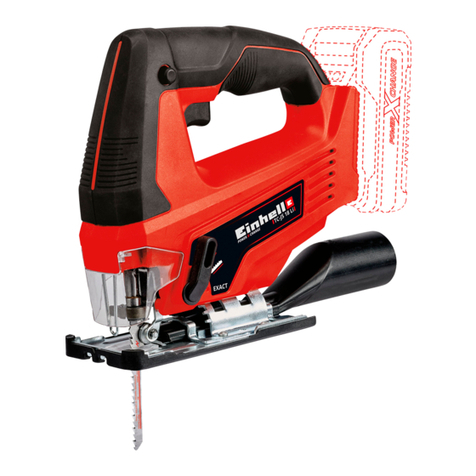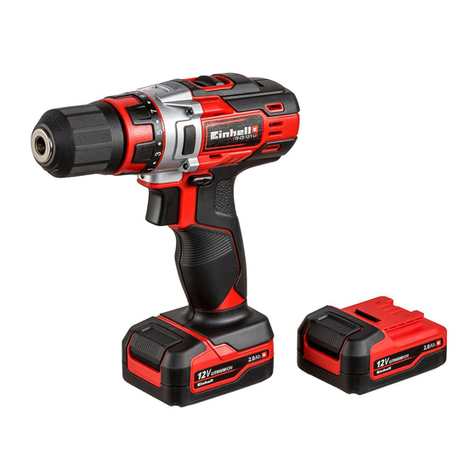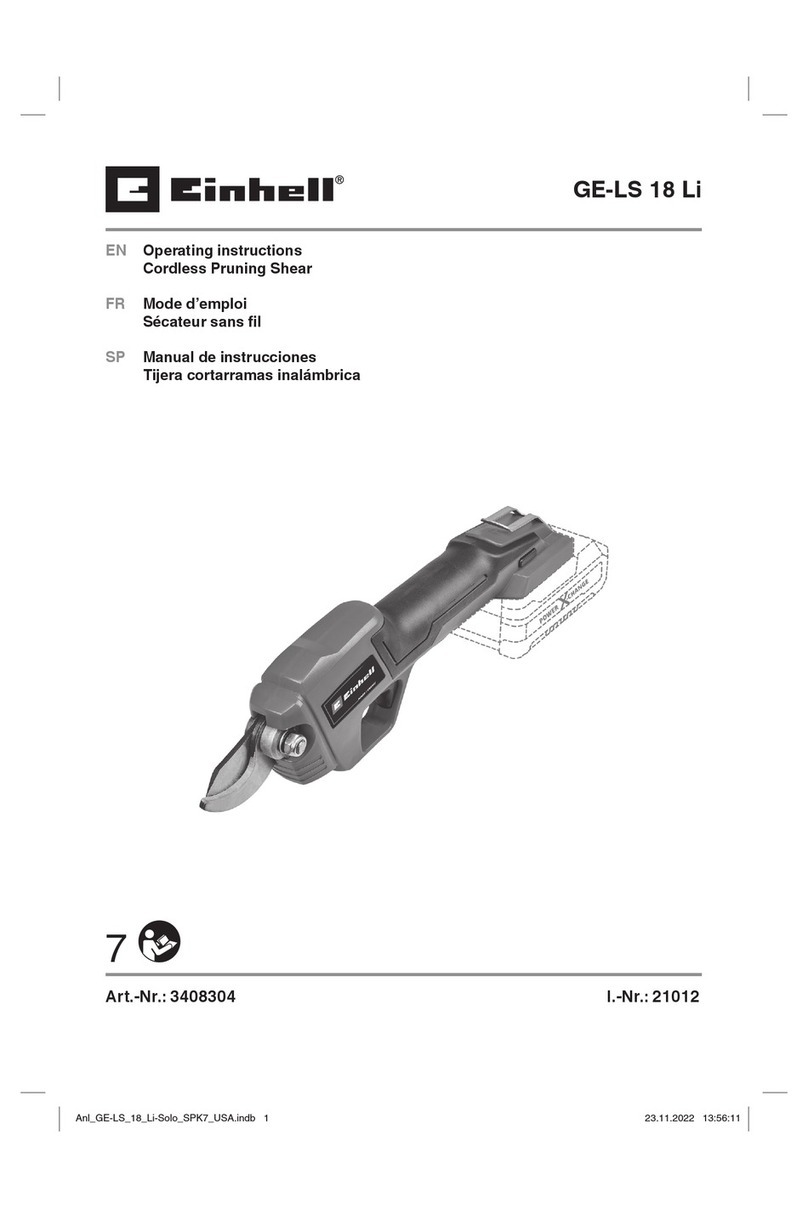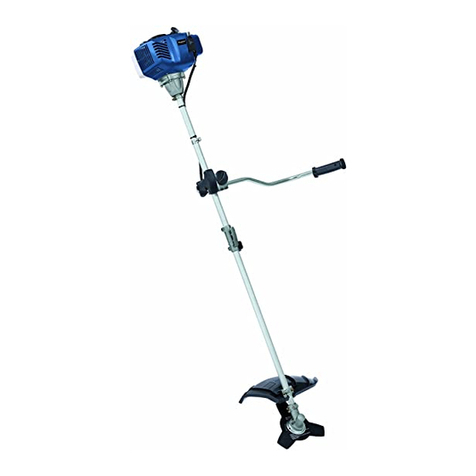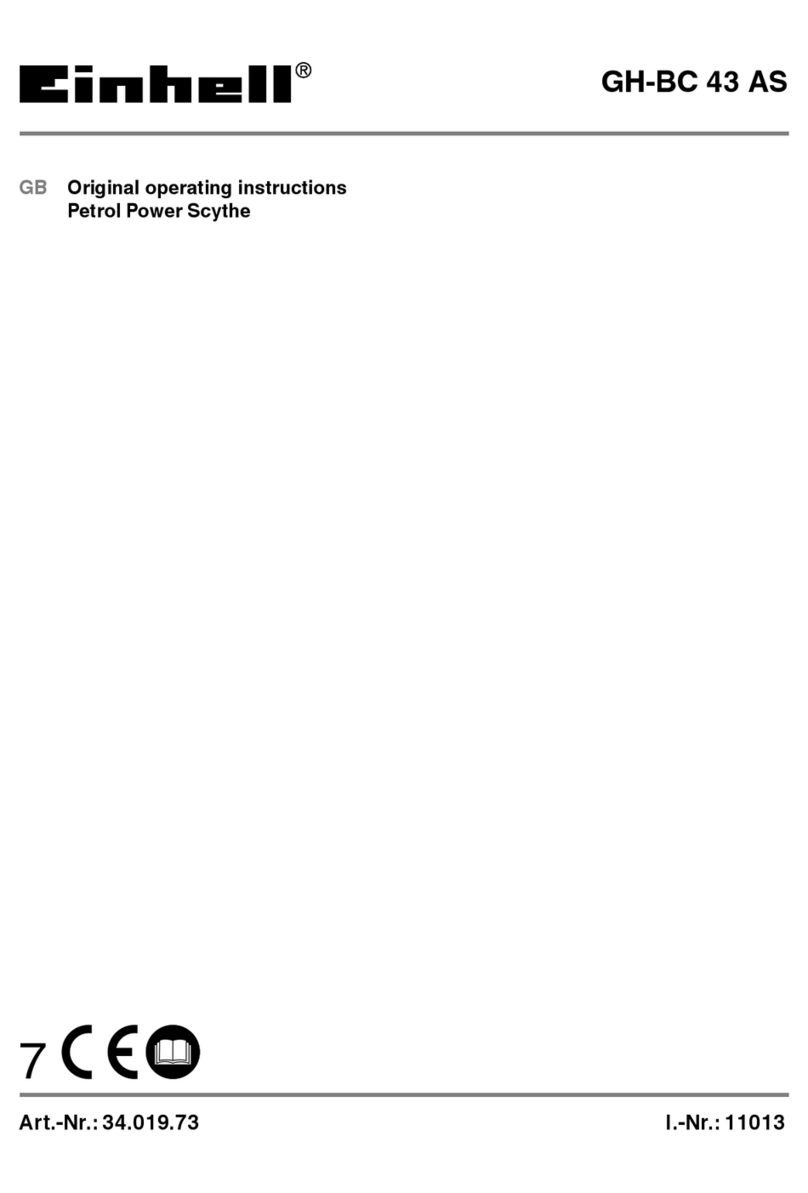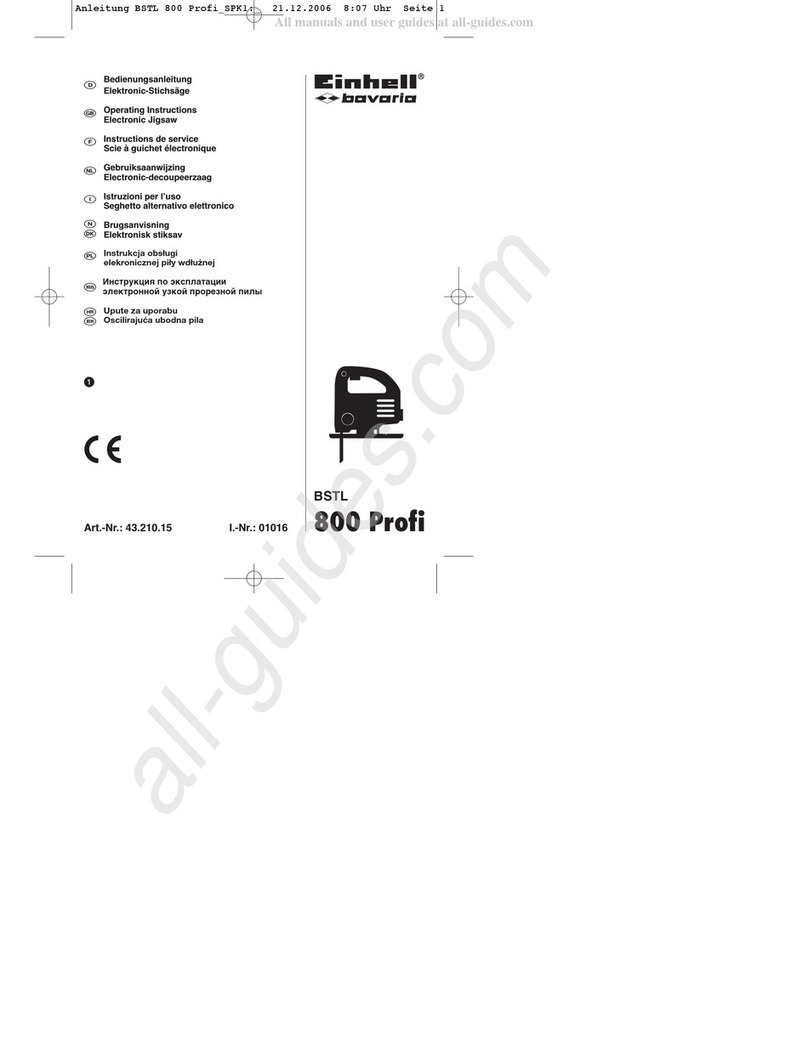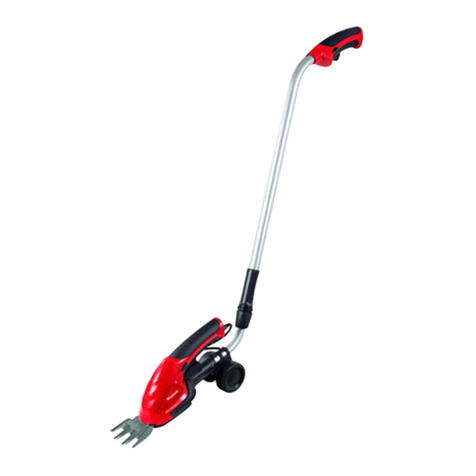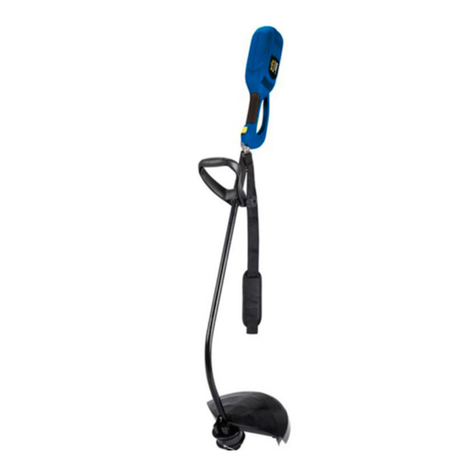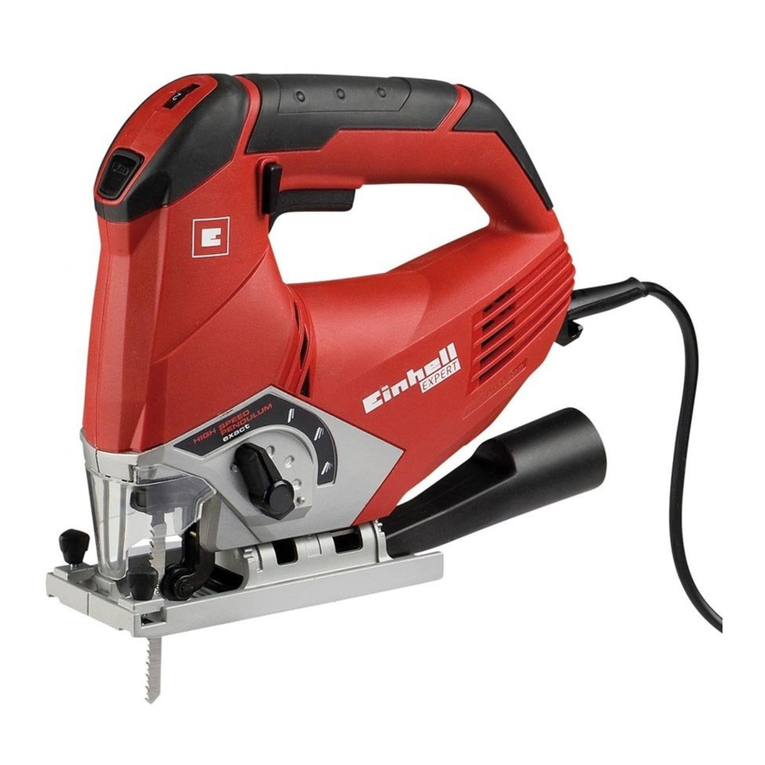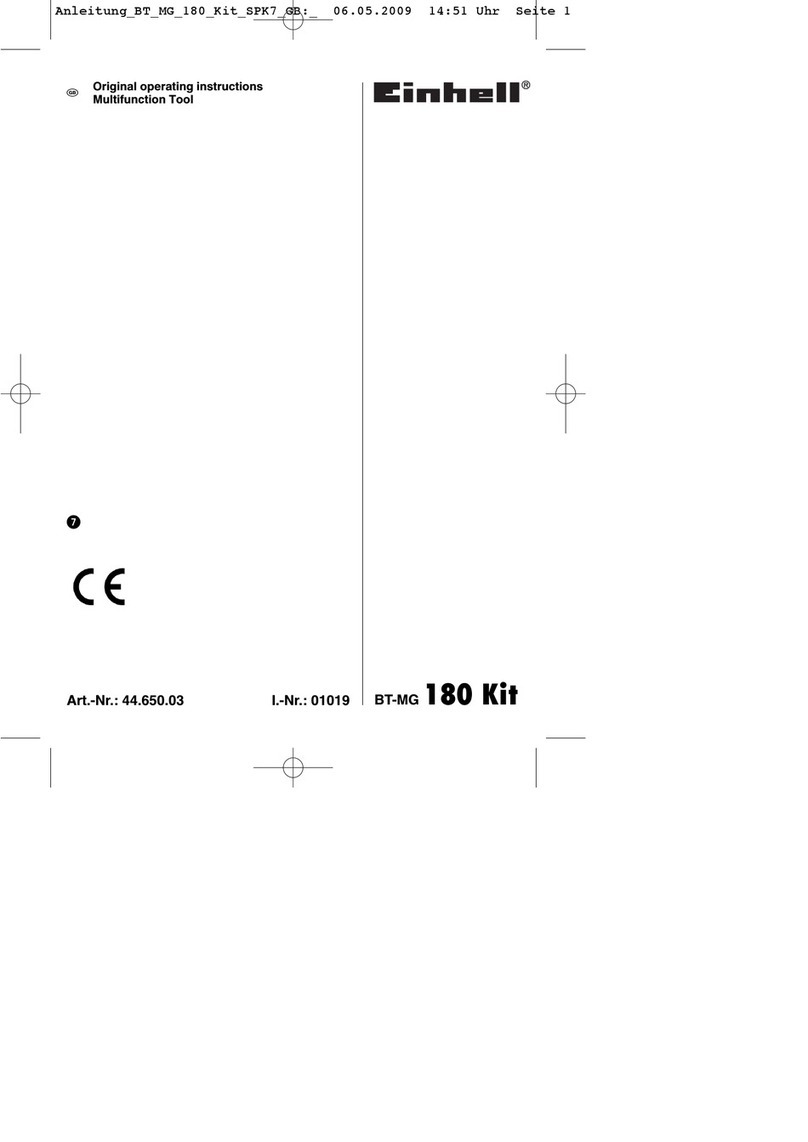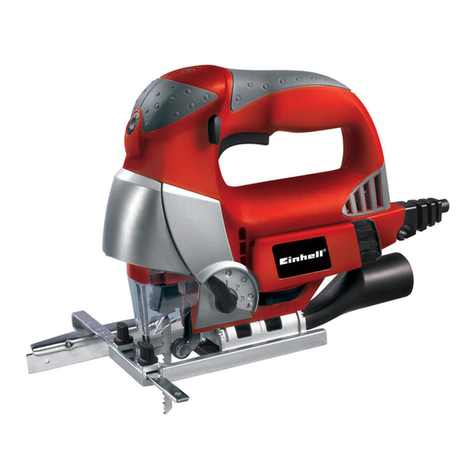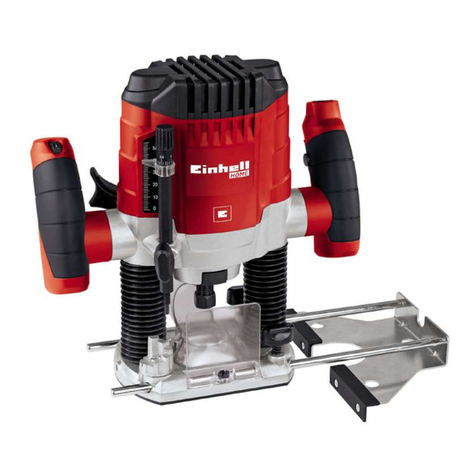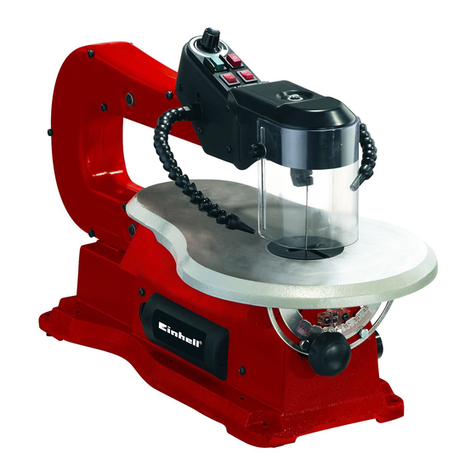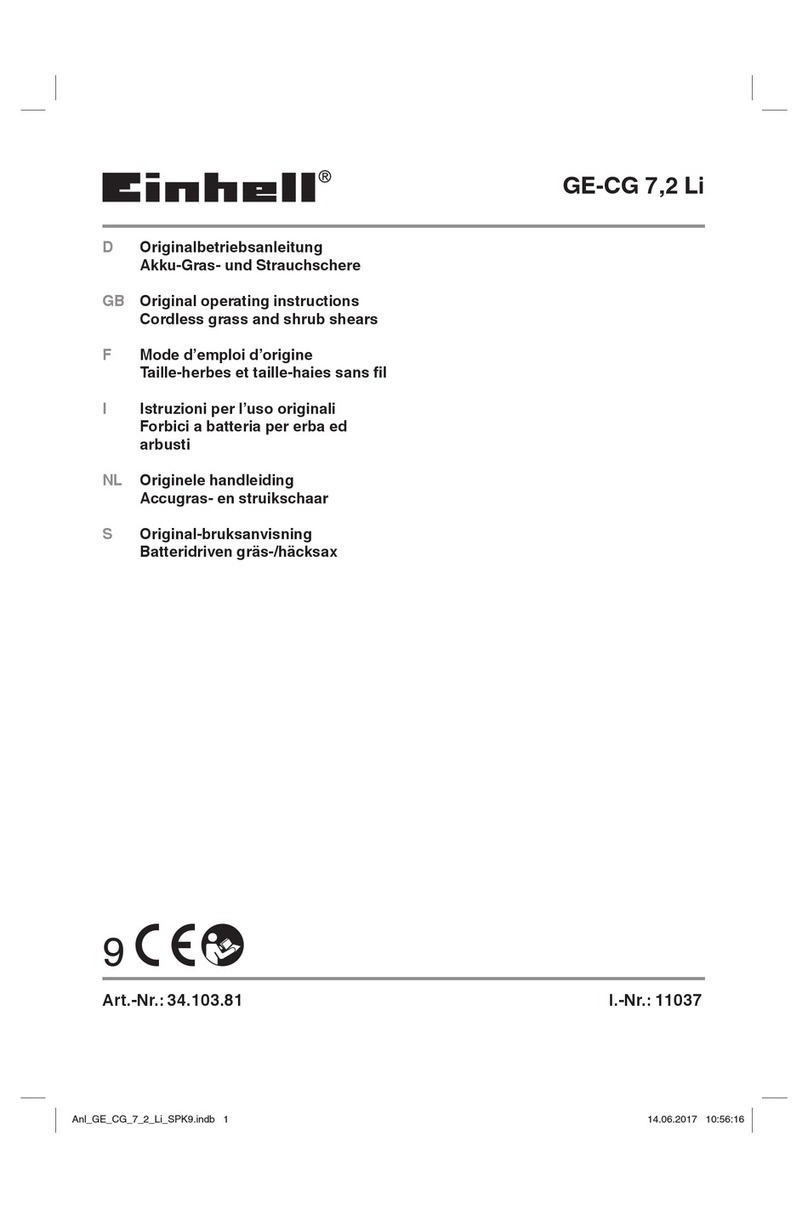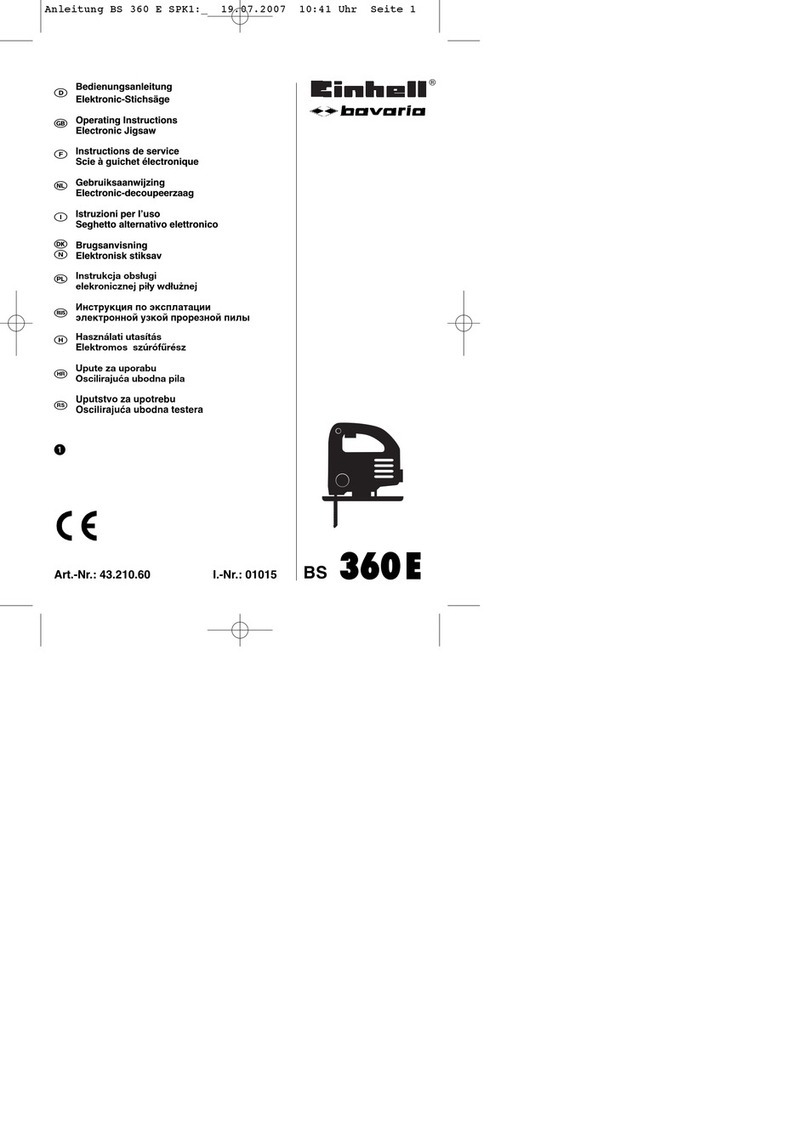manufacturer will be liable for any damage or injuries
of any kind caused as a result of this.
Please note that our equipment has not been
designed for use in commercial, trade or industrial
applications. Our warranty will be voided if the
machine is used in commercial, trade or industrial
businesses or for equivalent purposes.
6. Before starting the machine
앬Before you connect the machine to the mains sup
ply make sure that the data on the model plate
are identical to the mains data.
앬The adapter for the dust extraction system (5) and
the dust bag (2) must be fitted (Fig. 2).
7. Operation
7.1 Setting the cutting depth (Fig. 3)
앬Set the required cutting depth with the setting
wheel (3).
앬The designations on the setting wheel reflect the
various sizes of biscuit dowels
앬Push the drive motor (11) forwards to check the
cutting depth. The plug must be disconnected
from the mains supply for this purpose.
앬You can adjust the cutting depth setting using the
screw (a).
7.2 Setting the cutting angle and cutting height
(Fig. 4)
앬Undo the two locking levers (2).
앬Important! The set angle is indicated by the arrow
(b). The set height is indicated by the edge
belonging to the angle arrow (b) in question.
앬Set the angle stop (10) to the required angle. You
can select between angles of 45°, 90° and 135°.
앬Set the required height on the height scale (a); the
height of the groove should always be in the
center of the workpiece.
앬Now retighten the two locking levers (2).
앬A single pass will suffice for thin workpieces.
앬Several passes over the workpiece are required
for thicker workpieces.
7.3 Changing the cutter (Figs. 5-8)
Important! The plug must be disconnected from
the mains supply.
앬Remove the cover (a).
앬Place the face spanner (7) on the flange (b).
앬Press the locking knob; hold this knob and turn
the face spanner in the direction in which the
machine turns. After approximately half a turn the
locking knob will engage and the flange can be
released.
앬Release the cutter (c) from the flange (d). You can
use the face spanner (7) as an aid.
앬Then pull the cutter (c) out of the base plate (9).
Again, you can use the face spanner (7) as an
aid.
앬Now fit the new cutter following the above
instructions in reverse. Check that the direction of
rotation of the cutter is correct.
앬Refasten the cover (a).
Never press the locking knob (8) when the motor
is running. Ensure that the cutter is perfectly
secure before you start work.
8. Working with the biscuit jointer
8.1 ON/OFF switch (1)
앬To switch on the equipment slide the switch(1)
forwards and press the switch (1) until it engages.
앬To switch off the machine push the switch (1); it
then returns to its original position.
8.2 Making a workpiece (Fig. 9)
Before you start work with the biscuit jointer, the
workpiece must be marked as follows.
앬Place the two parts side by side; the workpieces
must be securely clamped.
앬Draw a line with a pencil perpendicular to the
position of the joint.
앬Several joints will be required for large pieces of
wood.
앬The distance between two lines should be at least
10 cm.
8.3 Positionin the biscuit jointer (Fig. 10/11)
앬Set and check the cutting depth.
앬Set the angle fence (10).
앬Set the height.
앬Position the machine near to the workpiece.
앬There are markings (a) on the machine; these
must line up with the line you have drawn.
앬Now switch on the machine and push the drive
motor (11) forwards. The workpiece must be se-
curely clamped.
11
GB

